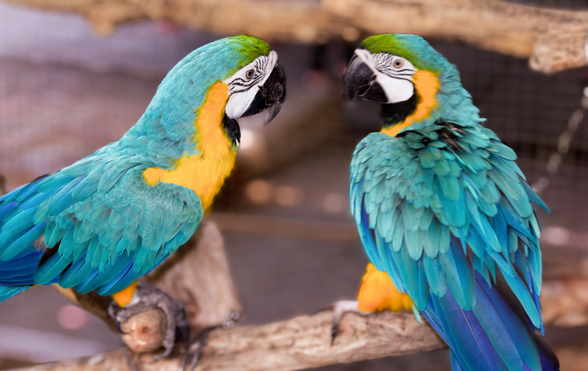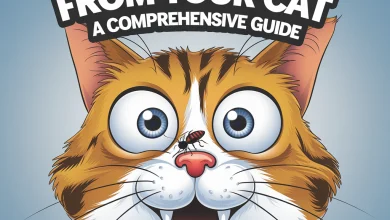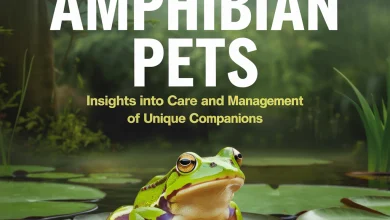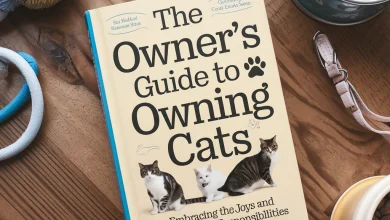The Colorful Personality of Parrots: Understanding Parrot Behavior

Parrots are intelligent, social, and expressive creatures with behaviors that captivate their owners. Known for their vivid personalities, parrots display a range of emotions, habits, and interactions that reveal their moods and needs. Here’s what to know about typical parrot behavior and how to interpret their unique expressions.
Common Parrot Behaviors
- Mimicking and Vocalization
- Talking and Sound Imitation: Parrots are famous for their ability to mimic human speech and household sounds. They may repeat phrases they hear frequently, sometimes even mimicking sounds like doorbells or phone ringtones. This vocalization is a natural social behavior for parrots, as they communicate with their flock through calls and chirps.
- Head Bobbing and Wiggling
- Expressing Excitement: Head bobbing is a common behavior in parrots and can indicate happiness, excitement, or eagerness to interact. They may wiggle or dance to music or sounds, especially when they’re feeling playful or curious.
- Beak Grinding
- Relaxation Signal: Parrots often grind their beaks when they’re relaxed, content, or about to go to sleep. The gentle grinding noise is a soothing habit, much like a cat’s purring, and can indicate that they feel safe and comfortable.
- Feather Fluffing and Preening
- Grooming and Health Check: Parrots fluff up their feathers when they’re comfortable or ready to sleep. They also engage in preening, a grooming behavior where they clean and align their feathers. Preening is essential for feather health, and some parrots even enjoy preening their owner’s hair!
- Tail Fanning and Flashing
- Showing Interest or Assertiveness: A parrot may fan its tail feathers or flash its eyes (an effect called “eye pinning”) to display excitement, interest, or assertiveness. This behavior can be a response to stimulation, like seeing a favorite person, toy, or new environment.
- Foot Raising
- Engagement or Relaxation: Many parrots lift one foot to signal they’re comfortable and relaxed. This behavior can also indicate they want to engage with their owner, perhaps stepping up onto a hand or asking for interaction.
- Biting and Nipping
- Communication or Defense: Parrots may nip or bite to communicate boundaries, especially if they feel threatened or overstimulated. Biting can also be due to hormonal changes during breeding seasons or a reaction to an unfamiliar situation. Proper handling, socialization, and patience can help reduce aggressive biting behaviors.
- Feather Plucking
- Sign of Stress or Health Issues: In some cases, parrots may pluck their feathers due to stress, boredom, or underlying health issues. Feather plucking requires attention, as it’s often a sign that a parrot is feeling unwell or neglected.
Understanding Parrot Emotions Through Body Language
- Pupils Dilating (Eye Pinning): Rapid changes in pupil size show excitement or intense interest, often during play or when observing something new.
- Feathers Flattened Against the Body: This can indicate fear, nervousness, or submission. When feathers are sleeked down, a parrot may be alert or feeling uncertain.
- Wing Drooping: If wings are slightly drooping, especially on a young parrot, it’s often a “begging” signal for food or attention. However, persistent drooping can signal illness, so it’s important to monitor.
Social Behaviors and Bonding
- Socializing and Flocking
- Bonding with “Their People”: Parrots are social by nature and form strong bonds with their owners or family members. They may seek attention by calling, whistling, or perching close to their bonded human.
- Regurgitation as Affection
- Displaying Affection: Parrots sometimes regurgitate food for their favorite person, a behavior they would naturally perform for a mate in the wild. While it may seem strange, it’s a display of affection and trust.
- Playfulness and Curiosity
- Investigating New Objects: Parrots love to explore with their beaks, using them to test new toys, foods, or surfaces. They often enjoy puzzle toys, climbing structures, and interactive games that stimulate their minds.
Tips for Managing Parrot Behavior
- Encourage Positive Interaction
- Reward your parrot’s friendly, calm behavior with treats and praise. Parrots respond well to positive reinforcement, and consistency will help shape good habits.
- Offer a Stimulating Environment
- Provide toys, perches, and space for exploration. A parrot that’s stimulated and entertained is less likely to develop destructive habits like feather plucking.
- Set Boundaries for Biting
- Avoid pulling away or reacting strongly to bites, as it can reinforce the behavior. Gently ignore the bite and reward calm behavior to teach positive alternatives.
Conclusion
Parrots are fascinating, expressive, and loving pets with behaviors as varied as their personalities. By understanding their body language, habits, and needs, owners can provide the care and companionship that makes their parrot feel safe and loved. Parrots thrive on attention, social interaction, and a stimulating environment, making them incredibly rewarding pets for those who take the time to connect with them.



